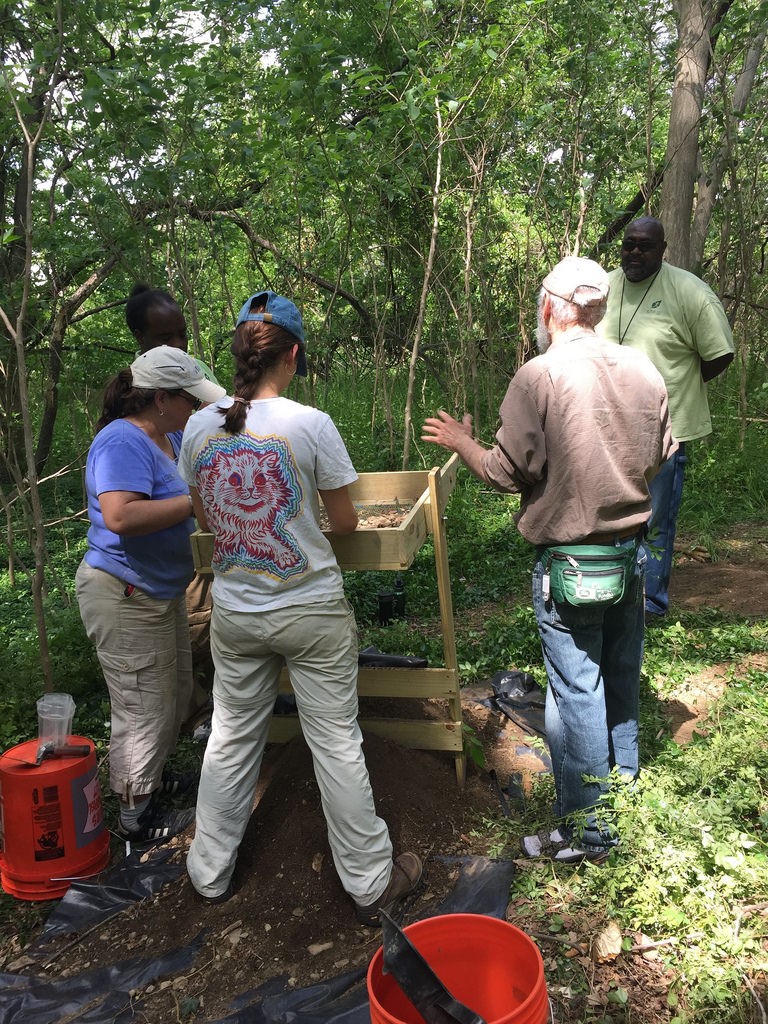The grand Captain Isaac Edward Emerson at 2500 Eutaw Place is up for auction by One House at a Time this on June 23—an exciting opportunity for a new owner to step in and save this important Reservoir Hill landmark from over a decade of neglect.
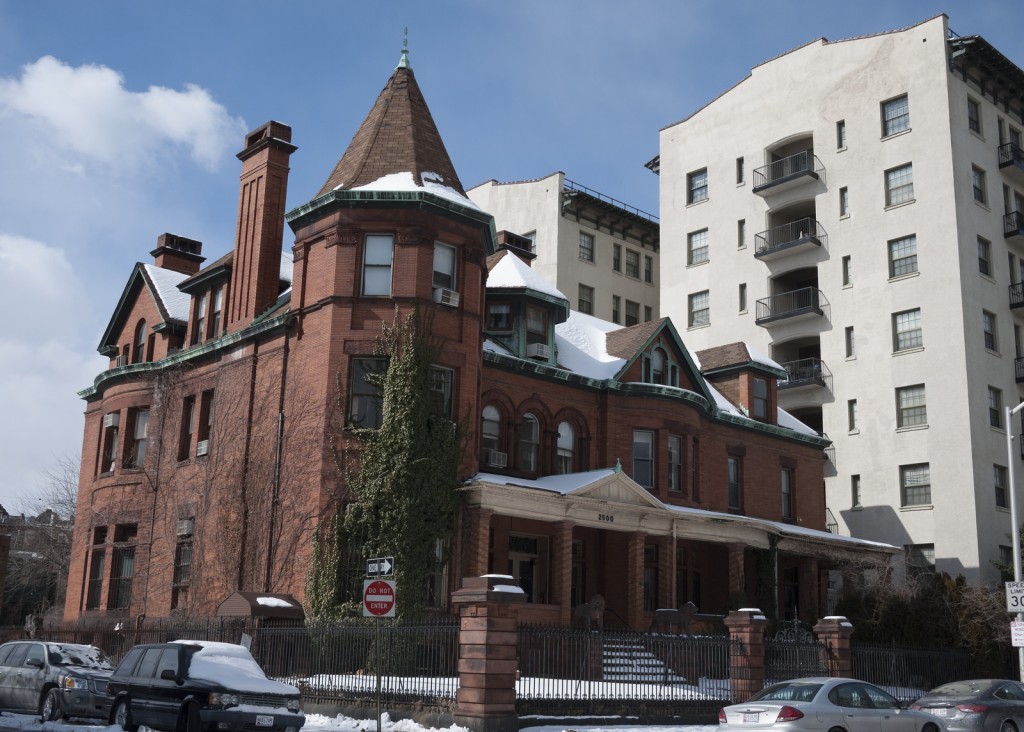

The grand Captain Isaac Edward Emerson at 2500 Eutaw Place is up for auction by One House at a Time this on June 23—an exciting opportunity for a new owner to step in and save this important Reservoir Hill landmark from over a decade of neglect.
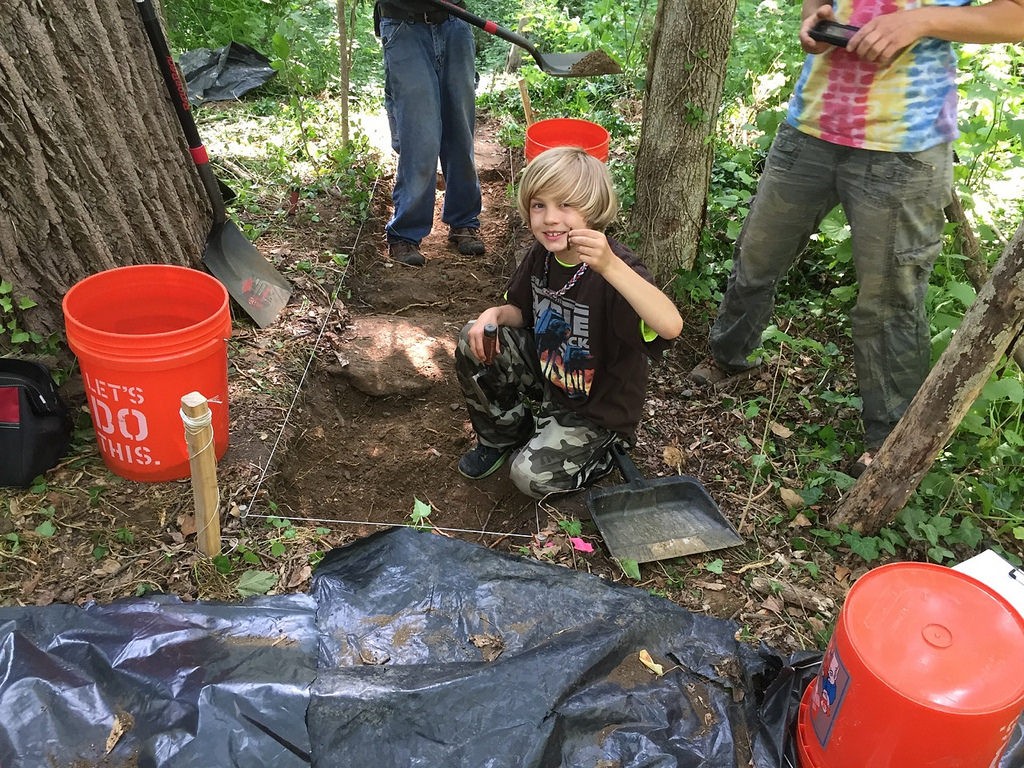
Lisa and Jason are taking a well-deserved break from writing up their field notes so I’m stepping in to share a quick reflection on the first day of our weekend open house and the tremendous response we’ve encountered from visitors of all ages. With three tours around the site, we took nearly 100 people on a walk from the site of Eutaw Manor to visit the remains of the Eutaw farm mill race and an overgrown wagon road – features that are provided important clues to help us understand the historic landscape that survives in Herring Run Park.
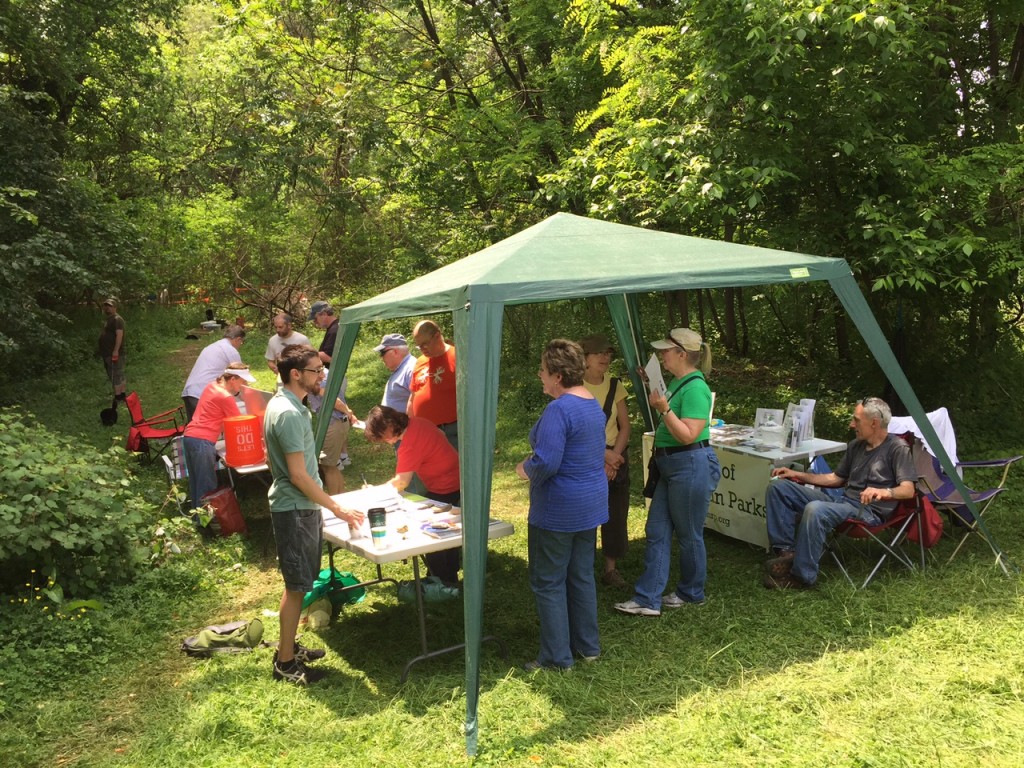
Historic maps and images helped visitors to imagine what the site looked like 200 years ago and try to think about the lives of the people who lived and worked on the property. Eutaw wasn’t just home to William Smith. Around 1850, Venus and Jeremiah Tilghman were two of the fifteen people held in slavery on the property – and thanks to the Maryland Historical Society – we were able to share a daguerreotype of the couple with today’s visitors. Many who stopped shared their curiosity about what will happen to the artifacts after the dig is done. We encouraged everyone to sign up for project updates to find out about more opportunities to participate in the cleaning and processing of the artifacts from the dig later this year.
We also really appreciated Pamela Wood from the Baltimore Sun stopping by the dig to report on archaeology in Herring Run. It is wonderful to see the volunteers who made this project possible recognized for their important contributions:
Friends Jeanne Marsh and Ron Roski and 10-year-old neighborhood resident Sophia Manni bent over a mesh screen Saturday afternoon, shaking it in hopes that piles of dirt would reveal tiny fragments of artifacts. They found bits of ceramic, glass, charcoal and brick, as well as hand-made nails. Marsh, a member of the Archaeological Society of Maryland, was thrilled to participate in a project within the city. Many archaeological digs are out in the suburbs, she said, because much of the city has been paved over, making urban digs a rarity.
Sophia got a kick out of getting a firsthand look at history. She recently read about the Civil War and the evolution of women’s rights. “I love figuring out how people lived back then,” she said.
We do too, Sophia! Please come out to visit the site tomorrow – Sunday, May 17 – for a tour at 10:00 am, 11:30 am or 1:00 pm.
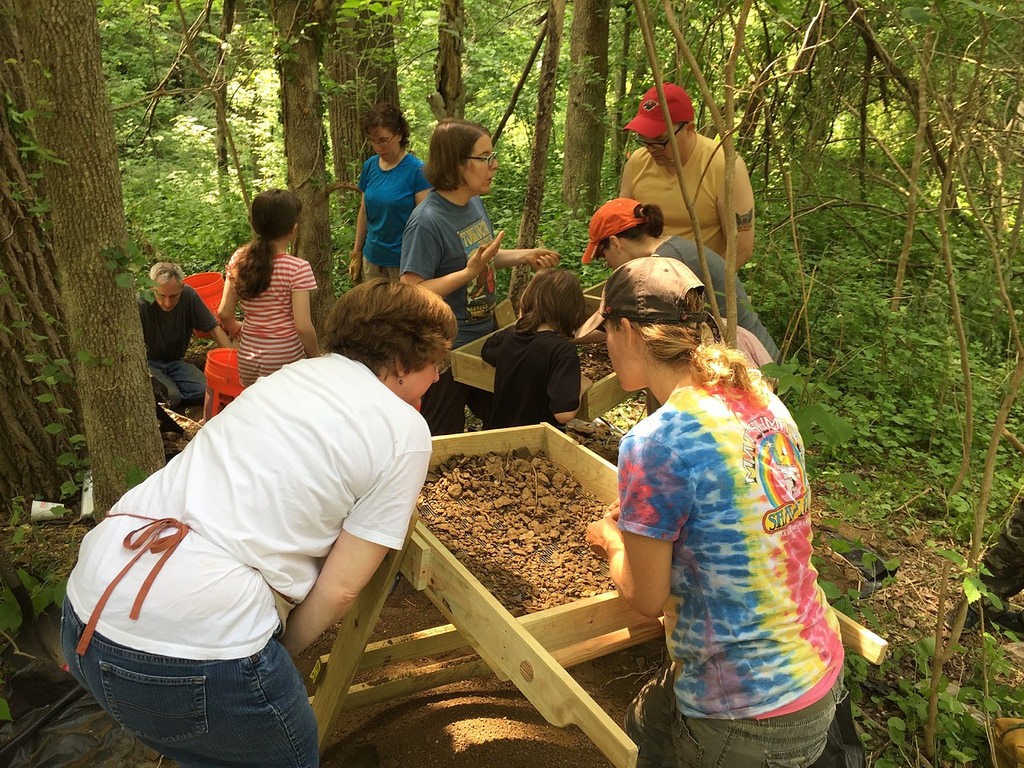
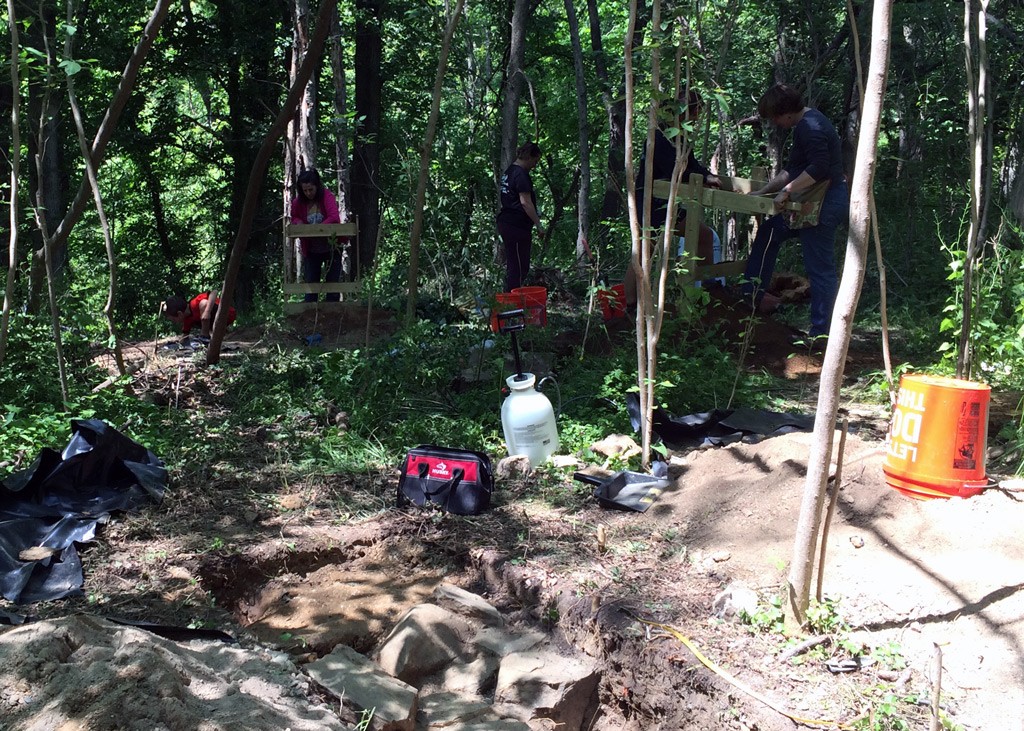
Here it our latest in the series of field notes from archaeological dig at the Eutaw Manor and Mill complex in Herring Run Park. Read on for Lisa Kraus and Jason Shellenhamer’s fifth journal entry – dated Thursday, May 14, 2015. Don’t forget to join us this weekend for the Herring Park Park Archaeology Open House – Saturday and Sunday!
As of today, we have discovered three of the walls of Eutaw House. Jason placed several exploratory test pits on the southern end of the site and this afternoon, exposed the top of the south wall. The south wall is located approximately 60 feet from the north wall, so already we know that this is a substantial structure. If we find the east wall, we’ll be able to figure out the building’s size, orientation, the arrangement of some rooms in the house, and the likeliest locations of other features like chimneys and outbuildings.
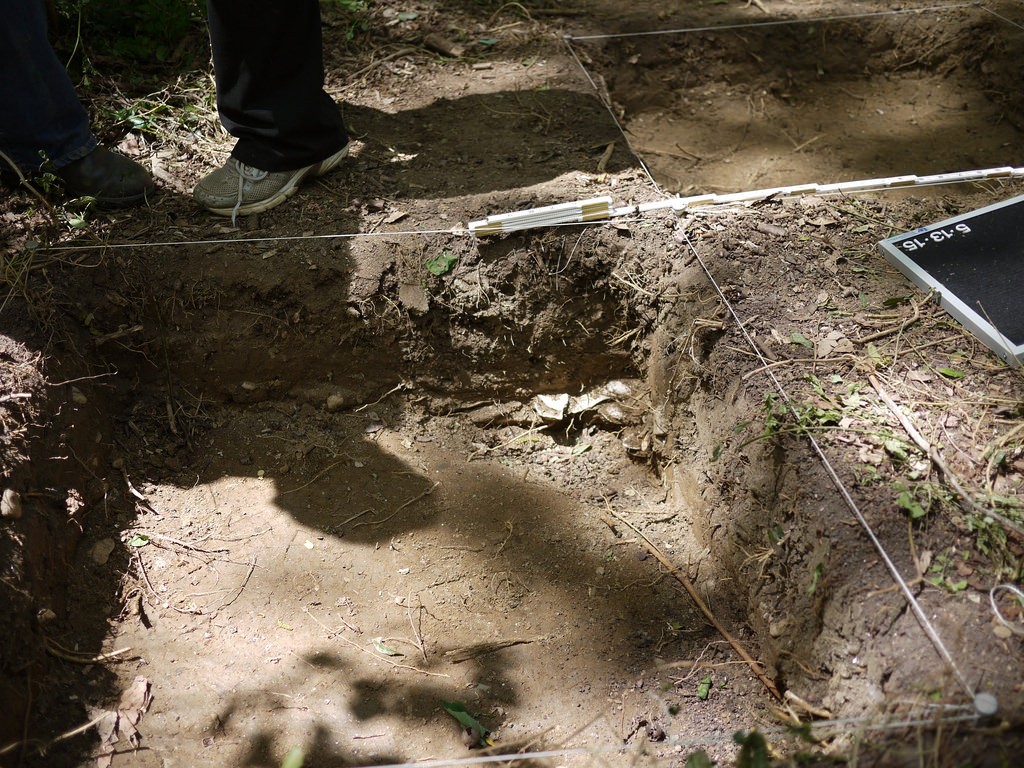
Lisa and her crack squad of volunteers excavated the oyster midden this morning. This little trash pit was exciting, although it contained relatively few artifacts compared to other spots across the site. It was a shallow pit, approximately 4 feet in diameter, filled with oyster shells and a handful of historic-period (ca. 1770-1820) artifacts. The oyster shells are likely the remains of a single meal, and we can tell that once they were discarded, they were completely undisturbed until we found them. So the oyster midden represents a moment in time, the immediate aftermath of an oyster picnic preserved for hundreds of years.
Only three days left! Today, we’re hunting for the east wall of the house and will begin to explore more of the yard space. Plus: is the mysterious depression on the western edge of the site the foundation of a small outbuilding, or something else entirely? We hope to find out over the next few days.
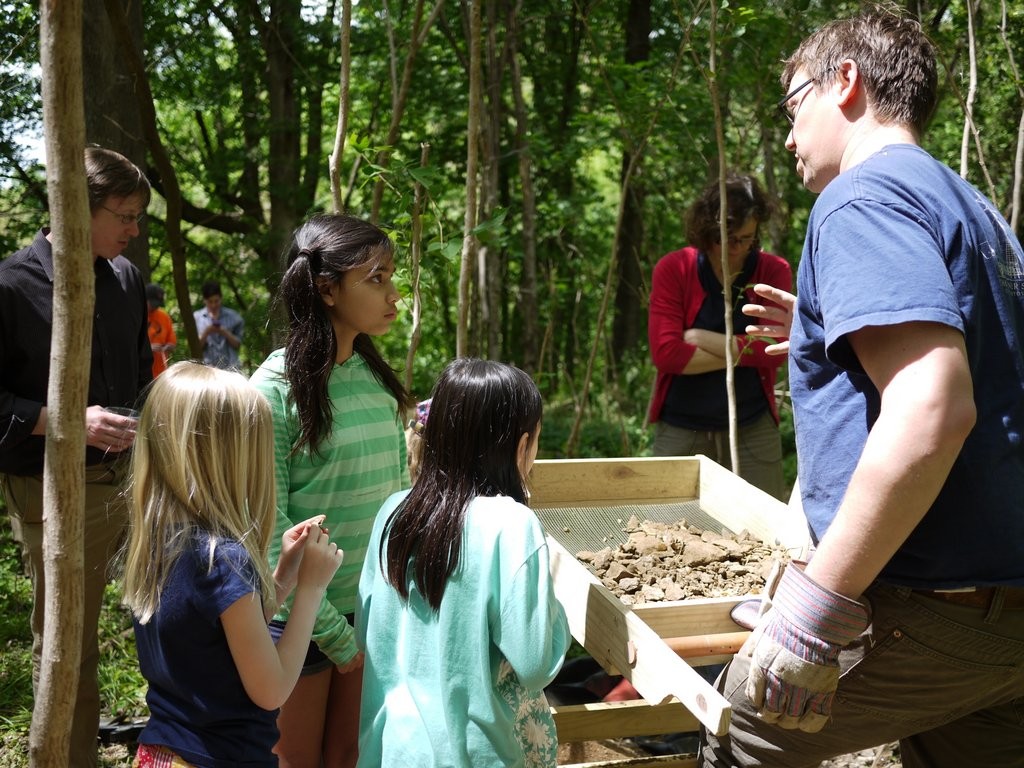
We are continuing to share field notes from Lisa Kraus and Jason Shellenhamer as they lead our archaeological dig at the Eutaw Manor and Mill complex in Herring Run Park. Read on for Lisa and Jason’s third journal entry – dated Wednesday, May 13, 2015 – or look back at past entries from Monday and Sunday.
Today marked the midway point for this first field season of the Herring Run Archaeology Project, and we enjoyed the beautiful cool weather as we continued to make new discoveries.
One of our ongoing goals is to define the dimensions of Eutaw House. We need evidence of all four walls to get a sense of how big the house was, so Jason set out this morning to identify more of Eutaw’s foundation.
As it turns out, the west wall, much like the north wall, was still intact and fairly close to the surface. A section of the west wall was uncovered and documented by lunchtime. While digging, one of today’s volunteers (NPS archeologist and Baltimore Heritage board member Dave Gadsby) noticed a dark stain near the west wall. After some careful cleaning of the area we determined the stain was likely the remains of a decayed post that may have supported a porch or stair. Tomorrow we will excavate the post and begin searching for the other two walls.
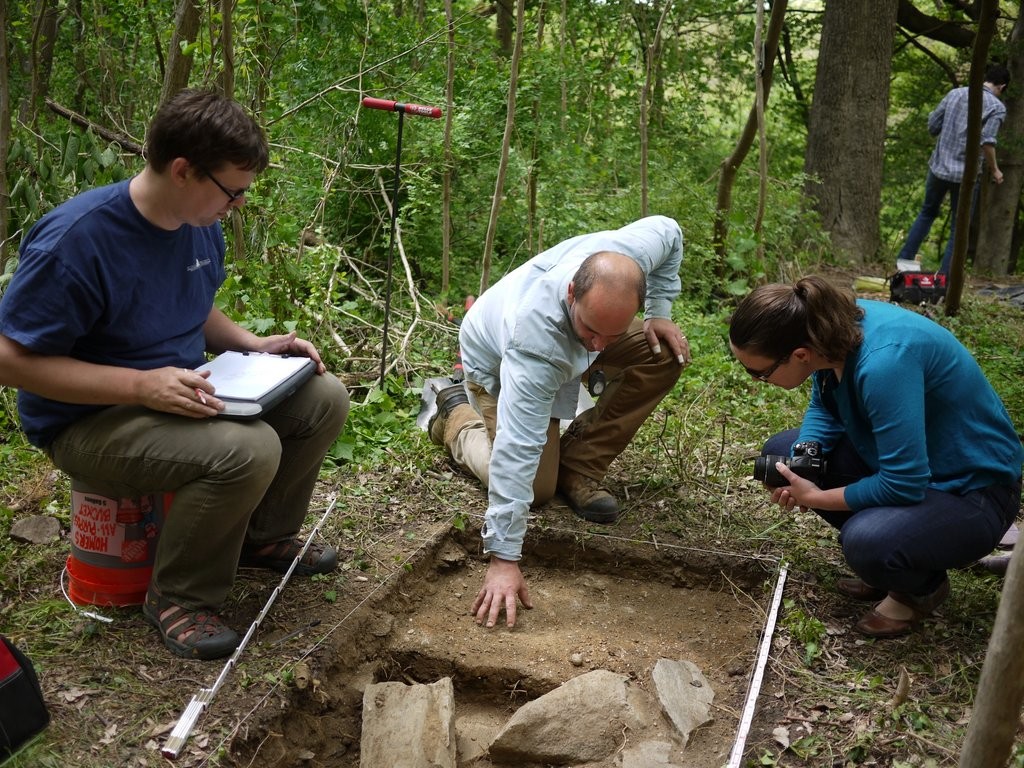
To the west of Eutaw House, Lisa and her team of volunteers continued their excavation of the mixed historic and Native American component of the site. In addition to finding nearly seventy-five Native American stone artifacts over the last two days, they have also discovered some of the earliest European artifacts at the site. These artifacts point to an occupation that predates that of William Smith by several decades.
Another interesting discovery was the identification of an oyster shell midden (trash pit). So far, the excavation of the oyster midden is in its preliminary stages, and we’re looking forward to exploring it more fully on Thursday.
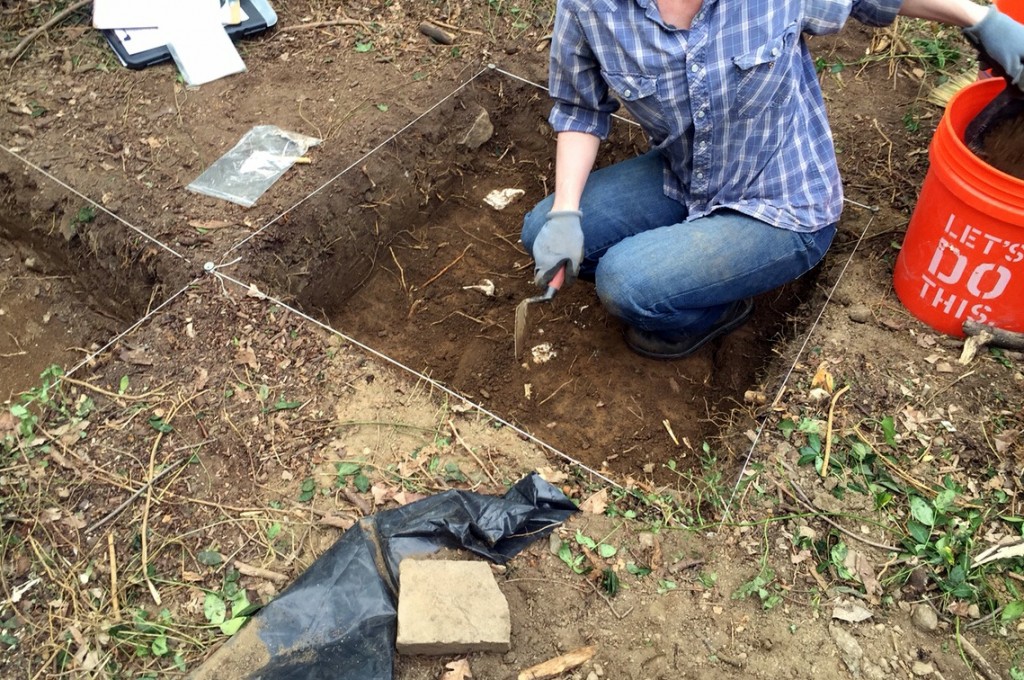
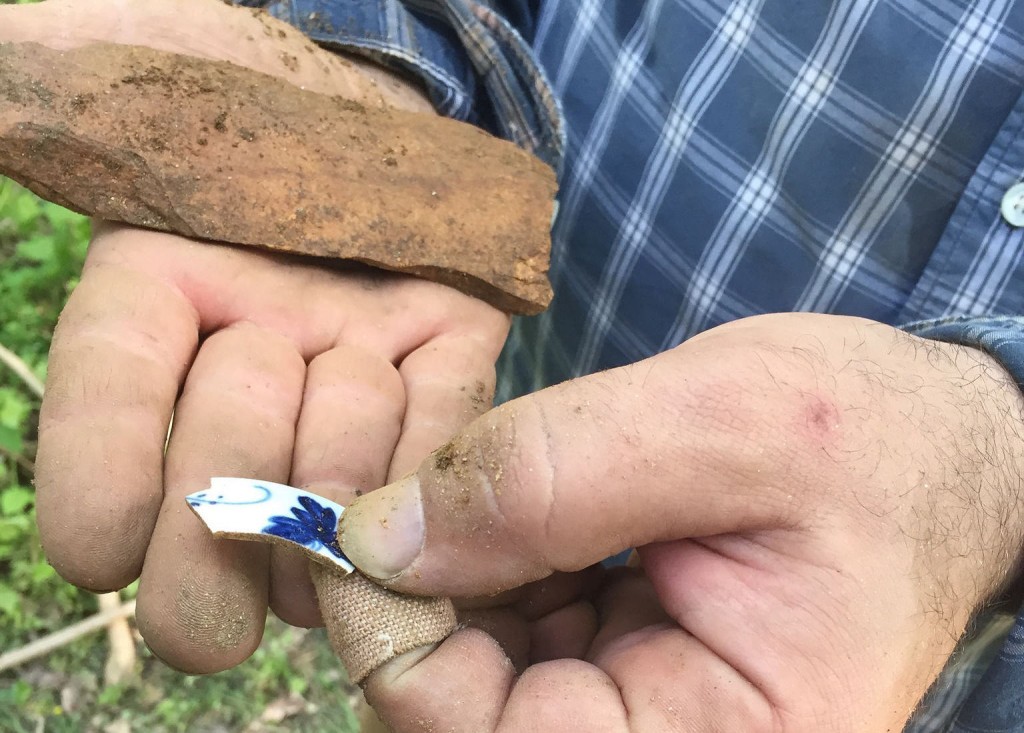
Here is the latest update from Lisa Kraus and Jason Shellenhamer on our archaeological dig at the Eutaw Manor and Mill complex in Herring Run Park. Read on for Lisa and Jason’s journal entry from Tuesday, May 12, 2015 or look back at past entries from Monday and Sunday.
Today we continued our investigation of the earlier historical occupation of the site to the south of the Eutaw House cellar, and expanded the excavation to the west, in order to explore the area between Eutaw House and the Eutaw Mill.
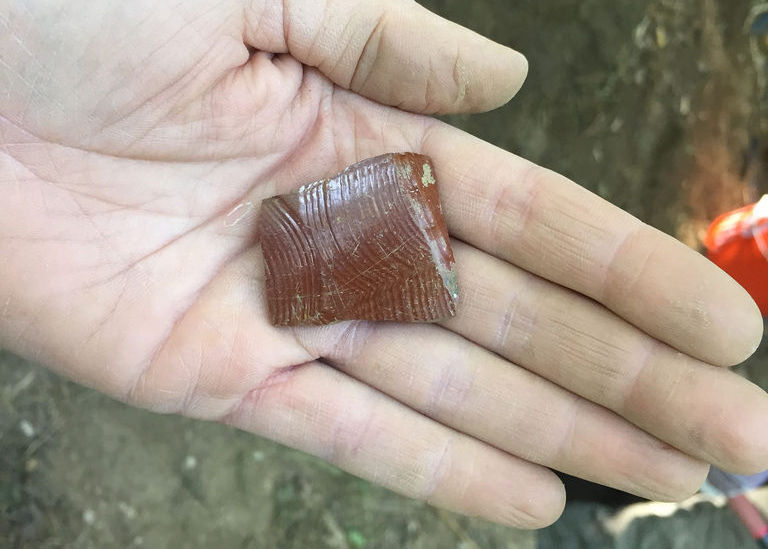
The southern portion of the site continues to yield somewhat earlier artifacts than those recovered from the Eutaw cellar. Today, volunteers Megan Cooke, Sara Sette, Irene Smith, Kasey Johnson, Eva Schneiderman and Patty Dowd got to work and made some great discoveries, including a lovely piece of Nottingham-type stoneware (ca. 1690-1790) and a flat brass trouser or cuff button. Today’s efforts continue to point to an earlier dwelling somewhere nearby.
Meanwhile, Jason, aided by volunteers Jody Landers and Curtis Waters, began to explore the area north and west of the Eutaw House foundation. This area appears to have been open space during the occupation of Eutaw House (ca. 1760-1865), and the artifacts recovered are mostly domestic trash that date to that time period, and included a huge fragment of animal bone and the dainty rim of a blue and white porcelain teacup. Although we had fewer artifacts from these units, they provide important information about the way buildings and open spaces were arranged while the site was in use 150 years ago.
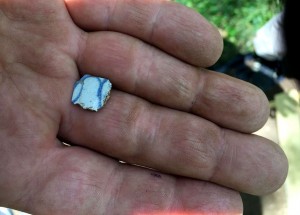
In the afternoon, volunteers Sarah, Eva, Ellen, Megan, Gene and Curtis helped investigate the western part of the site. Here we found more artifacts that seem to relate to the occupancy of Eutaw House, along with several that dated earlier. One exciting small find was a tiny piece of Tin-Glazed Earthenware, also known as Delftware, which had a long period of manufacture, but was most popular from the late 1600s through the late 1700s.
We also discovered further evidence of a prehistoric Native American presence on the site, but we’ll share more about that in our next post. Until then, many thanks to our enthusiastic volunteers and to everyone who stopped by to visit us today!
